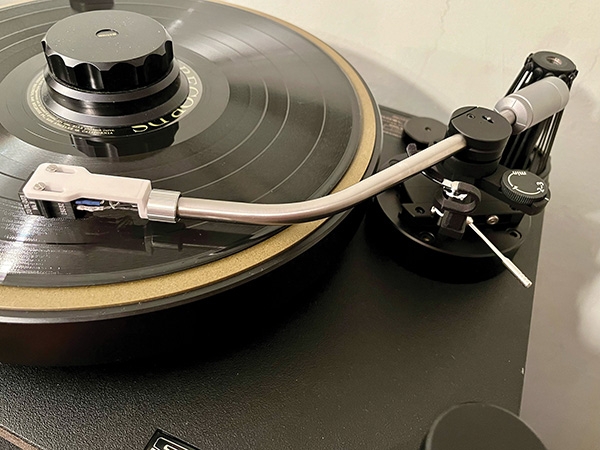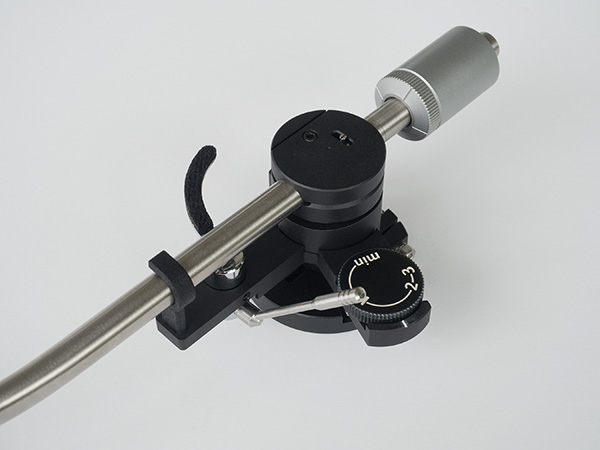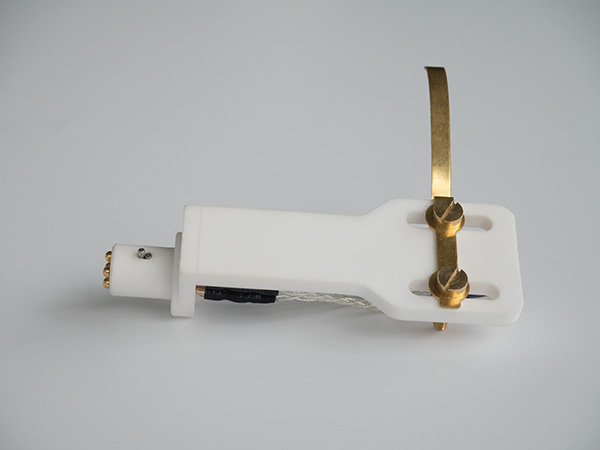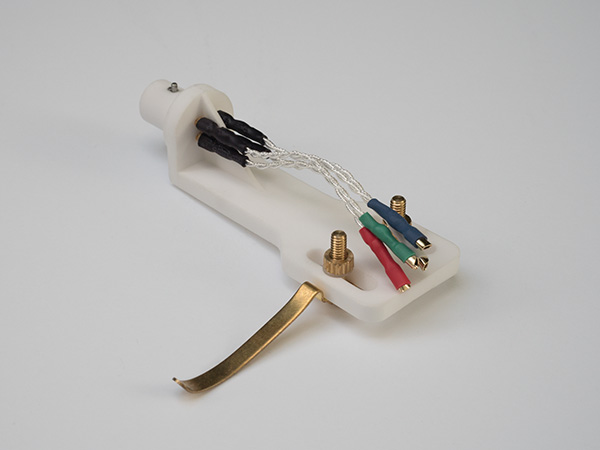| Columns Retired Columns & Blogs |
There is an unopened, sealed copy of this album on ebay right now.

More recently, SME partially reversed this decision, making their lower cost M2 series arms available for individual purchase again albeit at much higher prices. When Herb Reichert wrote about the M2-9 in 2016, it was an excellent value at $1099. At today's price—$3395—it's no longer a slam-dunk.
Five months later, in May 2020, we received the second blow in this double whammy of bad tonearm news. That's when the Ichikawa Jewel Company of Japan, maker of Jelco tonearms, announced without warning that they were shutting down operations, closing their doors for good. They blamed a combination of an aging workforce, worn-out tooling that needed to be replaced, and the coronavirus pandemic. It seemed odd that nobody was lined up to rescue such an important cog in the turntable-manufacturing machine. Jelco may not have been a household name, but their products were used everywhere, often rebranded by other manufacturers. Even if your turntable's tonearm wasn't made by Jelco, there's a strong likelihood that the cueing device attached to it was. Jelco's arms were the Toyotas of the tonearm world, covering the lower end of the price spectrum from around $400 going up to about $2000 and delivering excellent value at each point.
We lost two key players all at once, but it's not as if we suddenly had nowhere to turn for tonearms. Turntable manufacturers like Acoustic Signature, Clearaudio, Origin Live, Pro-Ject, Rega, and VPI all sell their tonearms separately, but for various reasons, I rarely see them used on turntables other than their own, except maybe Origin Live. A number of smaller tonearm specialists have popped up in recent decades: Acoustical Systems, Graham, GrooveMaster, Kuzma, Reed, Schick, Schröder, and at the ultrahigh end, Swedish Analog Technologies. Now we can add Korf Audio to the list.

Korf Audio TA-SF9R tonearm
Made in Austria just outside Vienna, Korf tonearms appear to be pretty conventional at first glance, but under the skin, there's a lot of innovative thinking going on. Two models are available, the straight TA-SF9 with a fixed headshell ($2036) and the review arm, the J-shaped TA-SF9R ($2364) with a detachable H-4 bayonet mount headshell (footnote 1). Korf sells its arms directly from their web shop. The prices are set in euros, but they are automatically converted to US dollars for buyers in the US. Consequently, the US dollar prices quoted here were correct at the time of publication but are subject to exchange-rate fluctuations. Please consult the Korf web shop for the latest US pricing.
Either Korf arm can be supplied with an SME-style mounting plate with adjustable sliding base, or with what they call a JIS/Linn/Jelco round mounting base. While the round base is compatible with the bolt pattern for most Linn, Jelco, and Kuzma arms, the platter spindle to arm mounting distance for some of them may be different. The Korf arm requires a mounting distance of 214mm, which is the same as many of the 9" Jelco arms.

All this talk about mounting patterns and arm bases brings up an important point. For now, Korf arms are mostly sold factory direct, which means that you are probably going to be the person installing it. This is a tall ask for most casual audiophiles and even for some pretty handy ones. It's similar to the car-tuning world, where anyone can go online and buy new pistons, camshafts, and an intake manifold for their Chevy small block engine, but it takes a fair amount of know-how (and tools and space, especially for cars) to install and tune them properly. The difference is that independent car mechanics can be found pretty easily, while turntable setup specialists who aren't tied to a specific retail operation tend to be pretty thin on the ground. Furthermore, unlike some other tonearm owner's manuals, the Korf manual assumes a certain level of prior experience and doesn't walk you through every step in detail. Korf says that they are gradually transitioning from a direct-sales-only model to having dealers and distributors, which should make it easier to get professional setup assistance down the road.
Mounting the TA-SF9R on my SME Model 30 turntable using the optional SME mount was straightforward, although the back of the counterweight stub came within a gnat's hair of one of the 30's suspension towers, even after I removed its decorative upper cap to gain a little extra clearance. All the expected adjustments needed to fine-tune the setup are available, but Korf places rigidity above convenience, so there is no on-the-fly VTA or other adjustment aids. For overhang and zenith, the headshell has a Technics-style plastic clip-on gauge that provides Stevenson alignment, but the arm has a clearly marked pivot point if you prefer to use your own protractor. The azimuth can be adjusted by rotating the armtube in the bearing yoke, but because this is a J-shaped arm, the vertical pivot is not in line with the headshell offset angle, so every change in azimuth will also change the stylus rake angle a bit. I would prefer a tonearm with adjustable azimuth at the headshell.
Things like this don't make it impossible to optimize the setup, just a little trickier. On his blog, Alex Korf downplays extremely precise alignment. He feels strongly that the arm's basic mechanical design and energy management is far more important.

In contrast to most arms, the Korf doesn't come with an output cable. The base of the arm post has a standard tonearm 5-pin DIN plug, to which you can connect the arm cable of your choice. I used my Cardas Golden Reference DIN-to-RCA.
Alex Korf falls into the category of designers I have previously described as deep thinkers, who look at each task from a fresh perspective. Space precludes me from going into too much detail on Korf 's thinking, so instead I recommend checking out his excellent blog, even if you aren't in the market for a new tonearm (footnote 2).


With its extra-stiff steel armtube, the Korf's effective mass is a hefty 28gm. Conventional thinking suggests that the arm is best matched with stiff cartridges like Ortofon SPUs, but Korf feels that the conventional approach for matching cartridges with arms is too simplistic. The Korf website has a handy compliance calculator where you can enter the total effective mass and the cartridge's compliance (footnote 3). The calculator analyzes for both acceleration and excursion at the headshell. The results are shown as two graphs (one each for acceleration and excursion) with a "safe zone" marked on each. Korf says this gives a much more accurate picture of whether you will have low-frequency resonance or tracking issues than the single resonance number you normally get from a compliance-vs-mass chart. With the Zu Denon DL-103 (see Page 2) I used with the arm, a standard chart puts the combination in the marginal zone, while the Korf calculator makes it look like a good match.
Once I quit thinking and started listening, it quickly became clear that that Korf arm was extracting an unexpected level of performance from the Zu/DL-103. Gone was the typical, slightly-soft-and-comforting Zu/DL-103 sound, replaced by something significantly more nimble and lighter on its feet. The Korf arm has an impressive ability to strip away extraneous noise and fuzz around each instrument, leaving an uncanny sense of clarity and purity.
Cedar Walton's direct-to-disc album The Pentagon (East Wind EW-10002) demonstrates this effect clearly on the opening track, "Manteca." Walton's piano chords as he comps during Clifford Jordan's solo were super clear and open, while Ray Mantilla's congas came across with great tone and dynamism. This is not a fat, lush sound. It's clear and quiet, providing an extra-clean window into the music.
For something a little more dynamically challenging, I played the Shostakovich Symphony No.1 conducted by Lawrence Leighton-Smith, from The Moscow Sessions (Sheffield Lab TLP-1000). This was a very unusual release for Sheffield Lab. Instead of their normal direct-to-disc approach, Keith Johnson of Reference Recordings recorded it, in 1986, to analog tape. Russia was still a pretty closed, Soviet country in 1986, so it was quite a trick to go to Moscow and record a large Russian orchestra using an American conductor and crew. The results are exceptional, and the Zu/DL-103 never flinched in handling Keith Johnson's recording and its punishing dynamics. Again, clarity was the word that kept coming into my head, with no uneasy sense of inner groove distortion even in the thunderous final movement. Somehow, the Korf managed to turn the Zu/DL-103's seemingly modest spherical stylus into an exceptional tracker. Maybe there is something to all Alex Korf 's talk about energy management.
My cartridge focus here was on the Zu/DL-103, but I also used the Korf arm with a Lyra Delos, with equally impressive results. I hope to hang on to the arm for a bit longer so I can try a few more cartridges, exploring just how far I can push things past the normal effective mass–vs-compliance way of thinking. Korf says he has used the arm successfully with the high-compliance Shure V15 Type V-MR. That's a bit like stuffing a big block engine into a Smart car. We shall see.
Footnote 2: See korfaudio.com/blog.
Footnote 3: See korfaudio.com/calculator.

There is an unopened, sealed copy of this album on ebay right now.